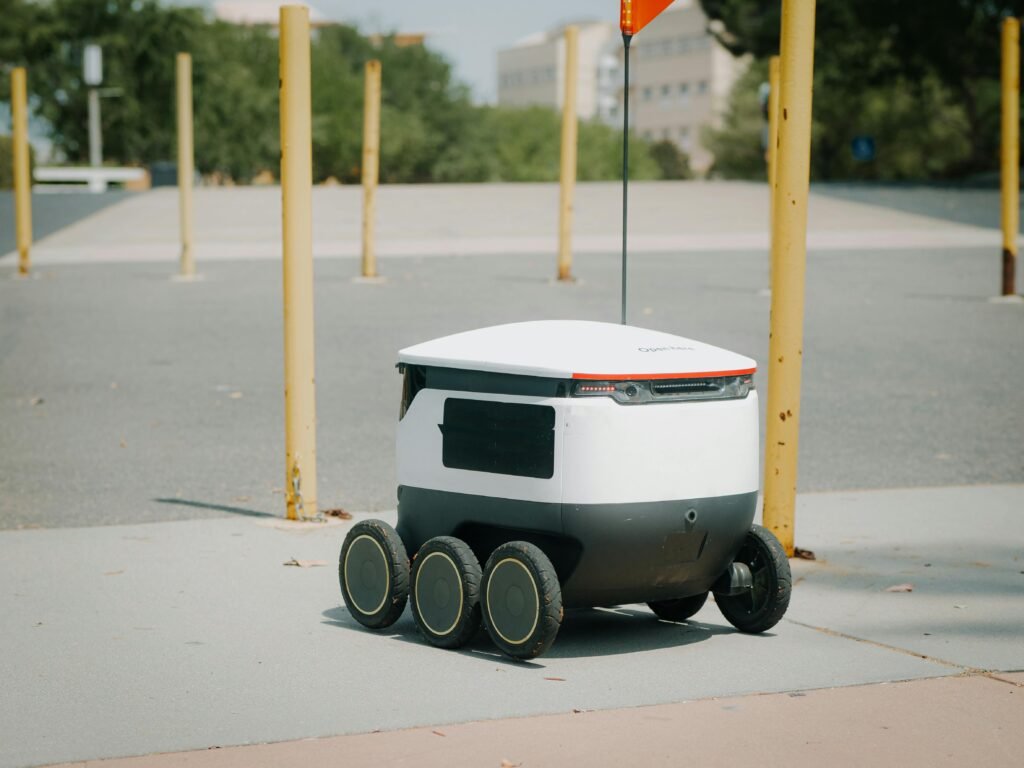What Are Autonomous Vehicles?
Autonomously driven cars, commonly referred to as self-driving cars, are the new transport innovation. These cars do not require a human directly to operate them. In these, safety and efficiency are assisted with advanced technologies like sensors, cameras, and artificial intelligence in the navigation of vehicles’ environment. Their basic aim is to reduce accidents on roads because of the mistakes of human beings and enhance the level of safety on roads.
Highly sophisticated sensor packages form the heart of the functionality of an autonomous vehicle. Such sensors include LIDAR, radar, and ultrasonic devices that, taken together, gather immense information about the surroundings of a vehicle. It thus helps the vehicle detect and track obstacles, pedestrians, road signs, and even lane markings. After such data is obtained, it is processed through cutting-edge software systems that enable the vehicle to make real-time driving decisions.
Autonomous vehicles can be broadly divided into different levels of autonomy, as interpreted by Society of Automotive Engineers. In this regard, SAE has categorized these levels and ranges from Level 0, where the human driver is fully in charge for operating the vehicle, and Level 5, whereby the vehicle performs all its driving tasks autonomously. For example, Level 1 and Level 2 vehicles offer some degree of driver assistance, which can be something like an adaptive cruise control that has a requirement for human inputs. Level 3 vehicle is a car that under certain conditions can drive fully autonomously but sometimes takes control from the human behind the wheel.
This move towards a fully autonomous vehicle represents one big transformational step regarding people’s travelling in the future. In the future, the vision is to make vehicles that not only improve convenience but also create a safer, efficient transportation system.
How Autonomous Vehicles Can Reduce Emissions
As the world is trying to come to terms with the very pressing issue of climate change, self-driving vehicles become one of the more important factors in the search for a cleaner tomorrow. Advanced technologies can give AVs several ways of reducing dangerous emissions. The most important thing that autonomous vehicles can do is save more fuel than human drivers. This will help the AVs optimize the route and reduce fuel waste in real time with its exact navigation. It would be most beneficial in the urban setting where stop-and-go traffic is one of the major contributors to greenhouse gas emissions.
Another significant transformation toward reducing environmental impact is the emergence of electric autonomous vehicles. Electric AVs do not have any tailpipe emissions and are, therefore, contributors to cleaner air and overall reduced pollution. Electric powertrains in autonomous vehicles decrease dependence on fossil fuels while also contributing to the global effort to increase the usage of renewable energy. Since the technology for batteries will only continue to improve, efficiency and range for electric AVs will continue to advance, making them even more feasible for use by everyone.
Shared autonomous vehicles have great promise in reducing the total number of vehicles on the road. This would be a huge benefit in reducing traffic congestion and, eventually, the carbon footprint of transportation in general. A lesser number of vehicles will automatically reduce the emissions per capita. This ensures that it positively impacts the metropolitan regions by improving the quality of air and reducing noise pollution. Collectively, all these features indicate the extent to which self-driving cars can bring importance to take a lead towards a good future.

Challenges to Widespread Adoption
Many such challenges need to be addressed before autonomous vehicles can come to our daily lives. However, the most crucial challenge that comes up with such innovations is the safety aspect of autonomous vehicles. Technologies aside, fully perfect systems of autonomous driving have yet to be developed and that has been a source of concern for many accidents-through software glitches or unforeseen scenarios. Such high-profile incidents with AVs have sparked debate over the reliability of current systems and left many people questioning whether full autonomy is achievable at this stage.
The public acceptance also presents a huge challenge. Most people show skepticism over the idea of losing control of their vehicle to an automated system. Such fear is usually driven by issues of privacy, security, and the unknown behavior of human drivers. For autonomous vehicles to be successful, there needs to be wide education and engagement of the public. The stakeholders have to prove that AVs are safe and reliable, but also what benefits they can bring: less traffic congestion and less emissions.
Another challenge is the regulatory environment. The traffic laws and regulations that are currently in place were not made for self-driving cars. We need to change these laws, which is a big and complicated job. Governments and tech companies must work together to make rules that keep us safe but also let new technology grow. We also need to decide who is responsible if a self-driving car has an accident. This will help car makers and insurance companies understand their roles.
In summary, the autonomous vehicle promises a cleaner and much more effective future. But they do need to overcome challenges associated with safety and public acceptance and legislation. It is going to take the efforts of all parties so that these can be worked through effectively.

Looking Ahead: A Greener Future with Autonomous Vehicles
The future of autonomous vehicles presents a significant opportunity for fostering a sustainable environment, underscoring the potential for cleaner urban living. Technology is advancing, and such vehicles are expected to play a core role in decreasing emissions and making transport much more efficient. There is a great possibility of the shift towards electric autonomous cars in reducing dependence on fossil fuels, thus resulting in a significant reduction in the pollution caused by traditional automobiles.
Sensor technology, artificial intelligence, and machine learning are some of the areas where innovations will combine to offer better routes, energy efficiency in driving, and hence safety for autonomous transportation. These innovations will also help in intelligently managing traffic flow, which in turn helps reduce congestion and, as a result, emissions. With autonomous vehicles, cities can then design their roads and infrastructures to not rely on parking space so much, giving way to more sustainable public transportation options.
Cities can now imagine themselves with electric autonomous vehicles, and they can now start thinking of strategies that speak for cleaner air and mitigate the urban heat island effect. This would mean having fewer gas vehicles on the road and a huge decrease in greenhouse gas emissions that help build a more public health-friendly and sustainable environment. It will further help improve accessibility, since the overall number of vehicles will decrease gradually because of the entry of self-driving vehicles into public transportation.
It is only through collaboration between governments, industrial players, and local society that this greener tomorrow shall be achieved. Stakeholders need to invest in research and development, regulations for sustainable technologies, and public awareness programs. This will make sure that people will be more ready to shift to a cleaner, more efficient transportation. Thus, it is their collective effort that will shape the future in which autonomous vehicles will help make the world a healthier place.
Do share your thoughts by commenting below.






